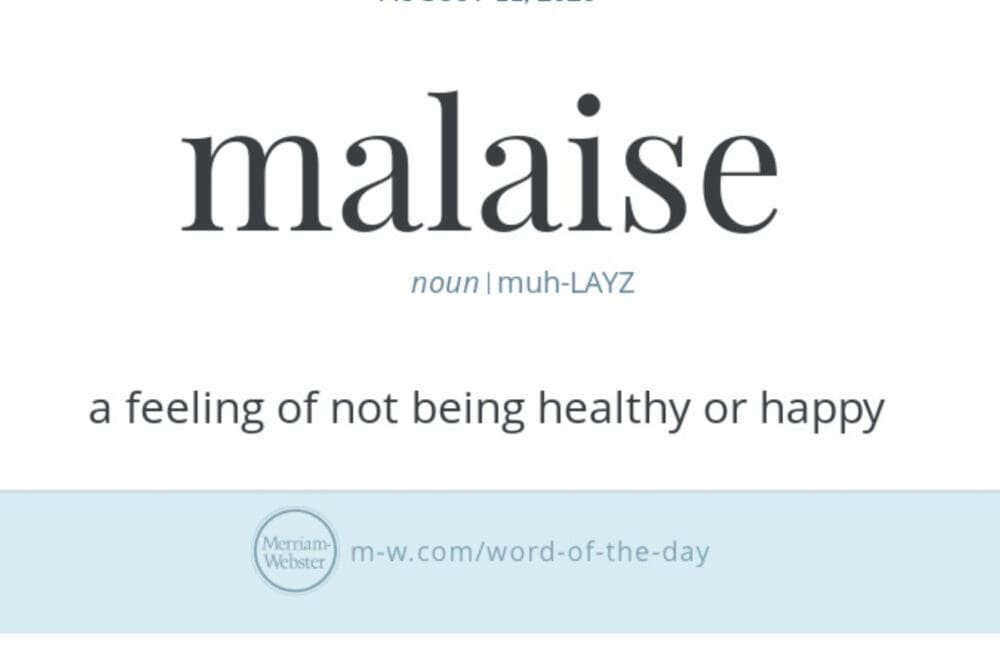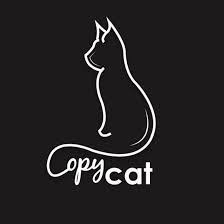Pricing, Features, Functionality & More – All That SaaS

[ad_1]
According to almost every Zoom Review, it is a highly recommended video conferencing service that offers cloud-based ancillary features.
With a million software options available online, it’s hard to pin-point the best one. However, a video conferencing software with over 500,000 customer organizations would definitely go as number one choice. Right?
Well, that particular software is Zoom.
Zoom Review 2023: Features, Functionality, Pricing, Support
What is Zoom?
With support for up to 1,000 participants at a time, the Zoom app offers a wide array of essential features to meet your company’s virtual requirements.
This software can be installed in pretty much all desktops and mobile apps which makes it extremely user-friendly. Besides a vast range of video tutorials and online supports are made available so first-time users can dive into the experience without any training for the software.
The strongest selling point that gives Zoom a firm competitive edge over other applications is how it is able to offer budget-friendly options to businesses and corporations in contrast to software such as Demio or Webinar Ninja.
A high-quality and inexpensive experience in communicating with team members across the globe has allowed Zoom to catch the attention of several businesses very quickly!
This Zoom Review will cover in-depth aspects of the app such as its pricing, features, functionalities, user experience and customer support.
Let’s begin.
Zoom Video Conferencing Software Review (2023)
1. Pricing – 4.4 out of 5.0
One of the most appealing aspects of Zoom is the price point, where there is a free plan offered and an extremely reasonable entry-level plan.
The cost-effective nature and the high quality of online meetings are what helps cast zoom as a cheap yet effective solution for today’s cross-company communication.
| Plan | Pricing | Features |
| Free | Free forever |
|
| Pro | $14.99 per host per month |
|
| Business | $19.99 per host per month |
|
| Enterprise | $19.99 per host per month |
|
Zoom offers a free plan and three paid service plans. All the fourth mentioned plans support up to 100 participants at a time. The pricing is structured on a per-host basis and a host license is required by every user who needs to host a meeting.
According to our zoom team meeting review, you can also increase meeting capacity by purchasing additional space at $65 per 500 attendees and $110 per 1,000 attendees per month.
2. Features and Functionality – 4.4 out of 5.0
Zoom is a strong contender in the online mass team communication market place because of the vast array of features and functionalities that it offers along with the reasonably priced business model that it follows.
2.1. Audio, Video, and Sharing
2.1.1. Dial-in numbers
When it comes to Zoom Video Conferencing Review, you would also want to know about the Audio Conferencing capabilities. Well for that, the participant needs to call a dial-in number and follow the verbal instructions.
Here a meeting ID is given for on top of the Zoom Window. The participant needs to enter the meeting ID followed by the key for the meeting they wish to join.
2.1.2. Language Support for Telephone
When a user calls the Zoom support, the call is prompted to the Zoom meeting in the language of the dial-in country. Zoom supports English, Arabic, French, Spanish, German, Portuguese, Mandarin, and Japanese
2.1.3. Push to Talk
This feature allows the participant to remain mute throughout the Zoom meeting. In order to unmute, you can hold down the spacebar and talk. In order to enable this function, the participant has to go in settings>audio and check the option to “Press and hold SPACE key to temporarily unmute yourself”.
It is important to note that any participant will not be able to unmute their screen if the host has prevented participants from doing so.
2.1.4. 3rd-Party Audio Conferencing
This feature allows hosts to utilize their own audio conferencing tools instead of using PSTN or VoIP via Zoom. In order to use the 3rd party audio conference feature, users need to logout and login to their application once the option has been enabled/disabled.
When this feature is being used, no sound is recorded during the recordings and no active speaker detection occurs.
In order to enable this option, go to Account Settings>Telephone and navigate to 3rd party conference option. Here, verify the setting is enabled and then input your 3rd party device information via the edit button.
Once this is saved, you can start using the feature.
2.1.5. Screen Sharing
2.1.4. 3rd-Party Audio Conferencing
This feature allows hosts to utilize their own audio conferencing tools instead of using PSTN or VoIP via Zoom. In order to use the 3rd party audio conference feature, users need to logout and login to their application once the option has been enabled/disabled.
When this feature is being used, no sound is recorded during the recordings and no active speaker detection occurs.
In order to enable this option, go to Account Settings>Telephone and navigate to 3rd party conference option. Here, verify the setting is enabled and then input your 3rd party device information via the edit button.
Once this is saved, you can start using the feature.
2.1.5. Screen Sharing
2.2. Recording Features
2.2.1. Cloud Recording
The 323/SIP connector feature allows standard-based systems to work with the cloud. Users can enable room systems with just a single touch to connect and communicate with vendors via tablets, mobiles, or desktop devices.
The H.323/SIP Connector features come with two options; Cloud Room Connector (Hosted By Zoom) and Virtual Room Connector (Hosted on-premise).
2.2.2. Local Recording
Local recording allows you to record a meeting audio/video locally on your computer. This feature is available for both free and paid subscribers.
The recorded files can be uploaded to Google Drive, Vimeo, Youtube or Dropbox. It is important to note that this feature is not supported in Android and iOS however cloud recording can be used if you are using a mobile device.
2.2.3. Automatic Transcription
You can also get an automatic transcription of the audio of the meeting/webinar that you record over the cloud by using the Audio Transcript feature.
The file is saved in .vtt file format in the list of recorded meetings. You can also display the transcription within the video itself. The feature is divided into sections where each timestamp shows the portion for which recording has been converted to text.
2.3. Zoom Meetings
2.3.1. Recurring Meetings
At times companies need to schedule recurring meetings for specific matters like monthly or bi-monthly increments. For such meetings, the Zoom team meeting review shows that the app allows hosts to schedule multiple occurrences so that each occurrence uses the same meeting ID as well as settings.
The ID for recurring meetings expires in 365 days after the first meeting starts. The recurring meetings cannot be schedules with Personal Meeting ID. However, it is suggested to use Google Calendar or Outlook for a better scheduling experience.
2.3.2. Messages and Chats
2.3.3. Auto-answer
This feature allows user to automatically answer meetings or group messaging information from specified users. This feature can be especially helpful in Zoom rooms where you would prefer to automatically join a meeting without having to accept or decline.
You can activate this feature for Mac or PC users only.
2.3.4. Meeting Templates
When scheduling a meeting, Zoom allows the host to save the setting of that meeting as a template for future meeting schedules. This template can include options such as alternative hosts and automatic recordings.
You can also save templates for recurring meetings and save the recurrence schedule as a part of the template. You can save up to 40 templates for future meetings.
2.3.5. Polling
This feature allows the host to create multiple choice or single choice polling questions for their meeting. Basically the polling feature allows you to launch a poll during the course of the meeting and collect responses from the participants in real-time.
Later, you can download these responses in the form of a report. You can also conduct anonymous polling if you don’t wish to get participant information in the poll results.
2.3.6. Registrations
When scheduling a meeting, the host can set registration requirements and add questions like email, name, and other custom information for attendees. The host can also generate registration reports to get a list of people who have registered for the meeting.
2.3.7. Meeting Live Streams
Take a look at zoom team meeting review, you see the user can also live stream their webinar to a custom platform if configured by the account administrator.
In order to activate this feature, the admin has to configure the setting before the meeting begins so that you start streaming with just one click as soon as the session begins.
2.4. Webinars
2.4.1. Webinar Roles
Zoom not only lets you engage in one-on-one calls with individuals but it also gives you the functionality to be able to host webinars with up to 100 participants.
Webinars are crucial to any business, and with Zoom, you have the option to be able to perform real-time webinars with features such as sharing data with a click and dual-screen support.
2.4.2. Webinar Branding
The webinar branding feature allows users to customize their webinar’s registration page with logo, banner, color, speaker information, descriptions and much more. The speaker information is also included in the webinar invitation.
2.4.3. Webinar Chat
When attending webinars, chat becomes a necessary feature for the attendees as well as the hosts for communication. So during the webinar, co-hosts, panelists, attendees and the host can communicate via the chat function.
2.4.4. Webinar Reporting
The reports feature is designed to generate information reports based on various metrics such as registration, attendee, performance, Q&A, and polling.
The final report file can be exported to the CSV format to carry out further analysis and gain useful insights. These reports are also made available for the previous year. In order to use this feature, the user needs to have hosting power or have a role in access to the usage reports.
2.4.5. Webinars Using PayPal
PayPal integration in zoom allows you to charge a registration fee for the webinar via PayPal. So basically, with this feature, you make it mandatory for attendees to complete payment in order to receive joining information for the webinar.
Here, you can also enable the option to ‘restrict the number of registrants’ and allow a specific amount of attendees.
2.5. Integrations
2.5.1. Extensions and Plugins
When it comes to Zoom Video Conferencing Review, this application has a wide array of extensions and plugins to offer. Let us discuss a few in detail:
1. Google Calendar:
The Zoom Scheduler Google Chrome Extension and Zoom Firefox add-on allow users to schedule their meetings directly via Google Calendar. Through this extension, you can also start an instant meeting or schedule a future one. Once the meeting details are confirmed, invitations are sent via Google Calendar so attendees can join meetings with a single click.
2. IBM Notes Plugin:
The IBM/Lotus Notes plugin is a convenient way to schedule meetings. This plugin allows you to not only schedule a Zoom Meeting but also make existing appointments and meetings through the interface of IBM Notes Calendar. This plugin can be used on IBM Notes 9 and above.
3. 3rd-Party Integrations:
Zoom Rooms are integrated with 3rd party applications such as Polycon, Lifesize, and Cisco which allows executive offices to extend conference rooms and include remote participants with single touch features so as to enjoy interoperability.
4. Dropbox Integration:
Integration with Dropbox allows users to perform many functions such as presenting dropbox files in zoom meetings, join meeting from dropbox and even present files during the activity sessions.
This integration is only available for Zoom desktop client and requires Google Calendar or Outlook to be connected with dropbox.
5. OneDrive Integration:
This feature allows you to share OneDrive files on Zoom. To start, you have to connect your Zoom account to OneDrive and then you can easily share files during meetings or in chat. This integration can only be enabled by admin – and is available for the desktop client only.
6. Oracle Eloqua Integration:
This integration allows users to register contacts for Zoom Webinars as part of the campaign. You can also make decisions based on registration or data without having to bring Zoom data manually into Eloqua.
It is important to note that for this integration, Zoom Feeder only provides contacts of users that have been provided up till activation of the campaign.
For this integration, hosts must be licensed and assigned to a particular add-on. They also need to purchase a video webinar plan for 100-10000 participants.
7. Salesforce Integration:
This integration is designed for the sales department since it allows you to start and schedule Zoom meetings with leads within Salesforce and also view your scheduled meetings. The Salesforce integration can be availed through Zoom Marketplace or Salesforce AppExchange. Either way, this integration requires access to REST API and is available only for Pro, Business, and API Partner Plan.
2.5.2. SSO and SAML
SSO or Single sign-on option allows users to login using company credentials. The Zoom SSO is written in SAML (Security Assertion Markup Language) 2.0 and offers automatic user provisioning. This particular feature requires the user to have a business or education account only.
2.5.3. Zoom Marketplace
The Zoom App Marketplace gives developers the option to be able to create third-party applications by building upon zoom’s video-first communications platform.
This means that developers can create their own customized version of zoom using leverage APIs, webhooks, and SDKs to better control how their company can make use of Zoom.
This feature gives a very dynamic flair to the Zoom app itself because it allows companies to be able to personalize their experience of the online conferencing software









